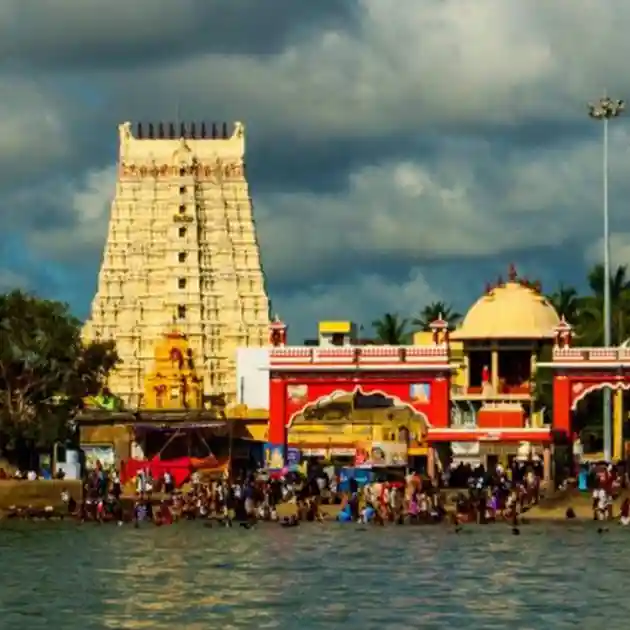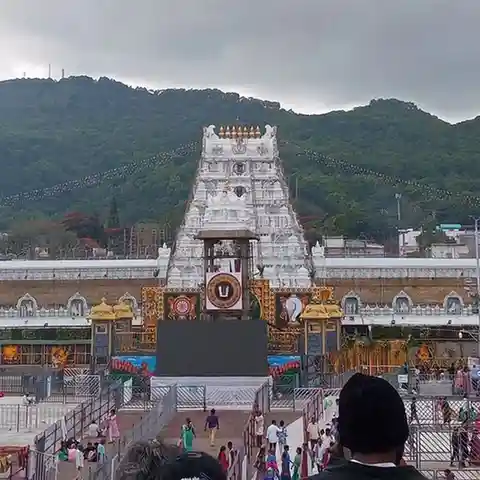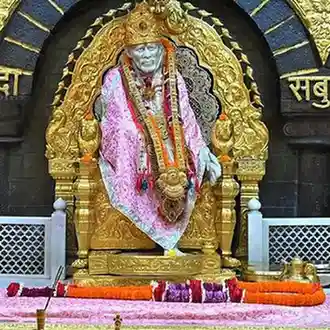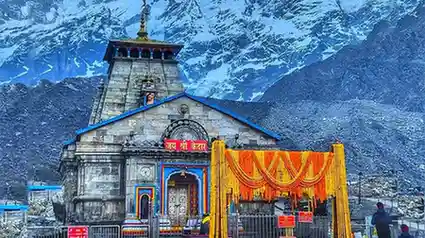Pilgrimage destinations in India for the summer: Summer season is a peak time for pilgrimage to India, given that it falls within some of the major religious festivals and presents conducive weather for visiting most of the holy sites. Indian pilgrimage sites provide not only religious comfort but also the experience of immersing oneself within the vibrant cultural tradition and heritage that characterize the religious scene of the country. Whether braving treacherous mountain trails or seeking solace in serene temple towns, pilgrims embark on a journey of self-discovery and enlightenment, guided by unwavering faith and devotion.
Table of Contents
Pilgrimage destinations in India for the summer are:
Here are some pilgrimage destinations in India that are particularly popular during the summer months.
Vaishno Devi, Jammu

Vaishno Devi Temple, situated in the scenic Trikuta Mountains in Katra, Jammu, is devoted to Goddess Vaishno Devi. Pilgrims undertake a tiresome trek, spanning about 13 kilometres from the base camp at Katra to the temple at an altitude of about 5,200 feet. The trek, though arduous, is done with unshakeable belief and devotion.
Amarnath, Kashmir

Located in the untouched surroundings of the Himalayas, the Amarnath Cave Temple is of great importance to devotees of Hinduism. Dedicated to Lord Shiva, the cave temple contains a naturally formed ice lingam that appears in the summer months. The annual Amarnath Yatra, which is undertaken between July and August, is a difficult trek over rough terrain and icy slopes, leading to the darshan of the sacred ice lingam.
Char Dham Yatra, Uttarakhand

Char Dham Yatra covers four holy places—Yamunotri, Gangotri, Kedarnath, and Badrinath—in the scenic Garhwal area of Uttarakhand. This spiritual journey, undertaken by pious Hindus, is said to wash away sins and lead to salvation. The yatra begins with a trip to the Yamunotri Temple, which is devoted to Goddess Yamuna, and then to Gangotri Temple, which is devoted to Goddess Ganga. Pilgrims further walk to Kedarnath Temple, one of the twelve Jyotirlingas, and end their travel at the Badrinath Temple, which worships Lord Vishnu.
Rameshwaram, Tamil Nadu

Rameshwaram, situated on tranquil Pamban Island in Tamil Nadu, is considered to be one of the most sacred spots for Hindus. The Ramanathaswamy Temple worshiping Lord Shiva is an example of rich cultural and religious heritage of this place. Devotees take a sacred pilgrimage to Rameshwaram in order to attain the blessings of the presiding deity and carry out rituals in order to revere their ancestors. The Agni Theertham, a sacred bath ghat in close proximity to the temple, is of very great importance, and pilgrims are convinced that a bath in its waters purifies them from sin.
Puri, Odisha

Puri, located on the picturesque coast of Odisha, is famous for the legendary Jagannath Temple, which honors Lord Jagannath, the avatar of Lord Vishnu. The temple with its towering minarets and beautifully carved facade has an air of majesty and spirituality surrounding it. During summer, the temple town of Puri resounds with colourful festivities.
Tirupati, Andhra Pradesh

Tirupati, which lies within the green hills of Andhra Pradesh, houses the famous Venkateswara Temple, or Tirumala Balaji Temple. Lord Venkateswara, an avatar of Lord Vishnu, is the deity worshipped in the temple, which is also known as one of the richest and most sought-after shrines in the world. The temple is visited by pilgrims seeking the blessings of the presiding deity and praying and paying their obeisance.
Shirdi, Maharashtra

Shirdi, a small town in Maharashtra, is of great spiritual importance since it is the home of the great saint, Sai Baba. Pilgrims from all religious backgrounds visit the Sai Baba Temple to worship the saint and attain his blessings. The temple campus, with its beautiful architecture and peaceful environment, offers a serene atmosphere for pilgrims to engage in prayer and meditation.
Conclusion
Taking a pilgrimage in the summer season in India provides pilgrims with an exclusive combination of spiritual growth and cultural exposure. Places such as Vaishno Devi, Amarnath, Char Dham, Rameshwaram, Puri, Tirupati, and Shirdi not only offer deep religious experiences but also reveal the rich diversity of traditions and architectural wonders of the nation. Each place, with its unique rituals and histories, welcomes pilgrims to enhance their faith and become a part of India’s rich spiritual fabric.
Visit Sharanagatam for Bookings.
Frequently Asked Questions
What are some vital items to take along on a summer pilgrimage to India?
Lightweight cotton dress, comfortable walking shoes, toiletries, ample water, sun protection (cap, sunscreen), and any medicines that you need.
Are there any precautions to take against health issues during high-altitude pilgrimages such as Amarnath or Char Dham?
Yes, acclimatizing well, hydrating well, avoiding strenuous activity in the beginning, and getting a medical checkup prior to the journey, particularly if you have ongoing conditions.
Is pre-registration necessary for pilgrimages like Amarnath Yatra?
Yes, the Amarnath Yatra must be registered prior. Pilgrims need to get a permit through the official process prior to embarking on the trip.
What is the optimal time to embark on the Char Dham Yatra?
The Char Dham Yatra generally opens in late April or early May and lasts till October or November, depending on the climate. Summer is the best season.
Are there any facilities for elderly pilgrims at such places?
Numerous pilgrimage sites have facilities such as palanquins, ponies, and helicopter service to help physically challenged or elderly pilgrims. It is suggested that one look into and pre-book these services.
How can one be sure of getting accommodation during the peak pilgrimage period?
It’s best to reserve accommodations well ahead of time via official tourism portals or reliable travel agencies to avail a comfortable stay during the pilgrimage.
Is there a dress code that should be worn to these religious locations?
Yes, modest clothing is suggested. Both men and women should dress in such a way that it covers the shoulders and knees out of respect.
May non-Hindus enter these sites for pilgrimages?
Most sites are open to all people of any religion, but some temples might be restricted. It is best to find out the particular site’s policy prior to visiting.
What are the average expenses involved with such pilgrimages?
Prices may differ depending on transport, lodging, and personal spending. Budget choices are possible, but it is necessary to budget based on one’s comfort and requirements.
Is photography permitted on temple grounds?
Photography policies vary at locations. Some temples do not allow photography within sanctums, whereas others might permit it in some areas. Always check for notices or inquire from temple officials.

